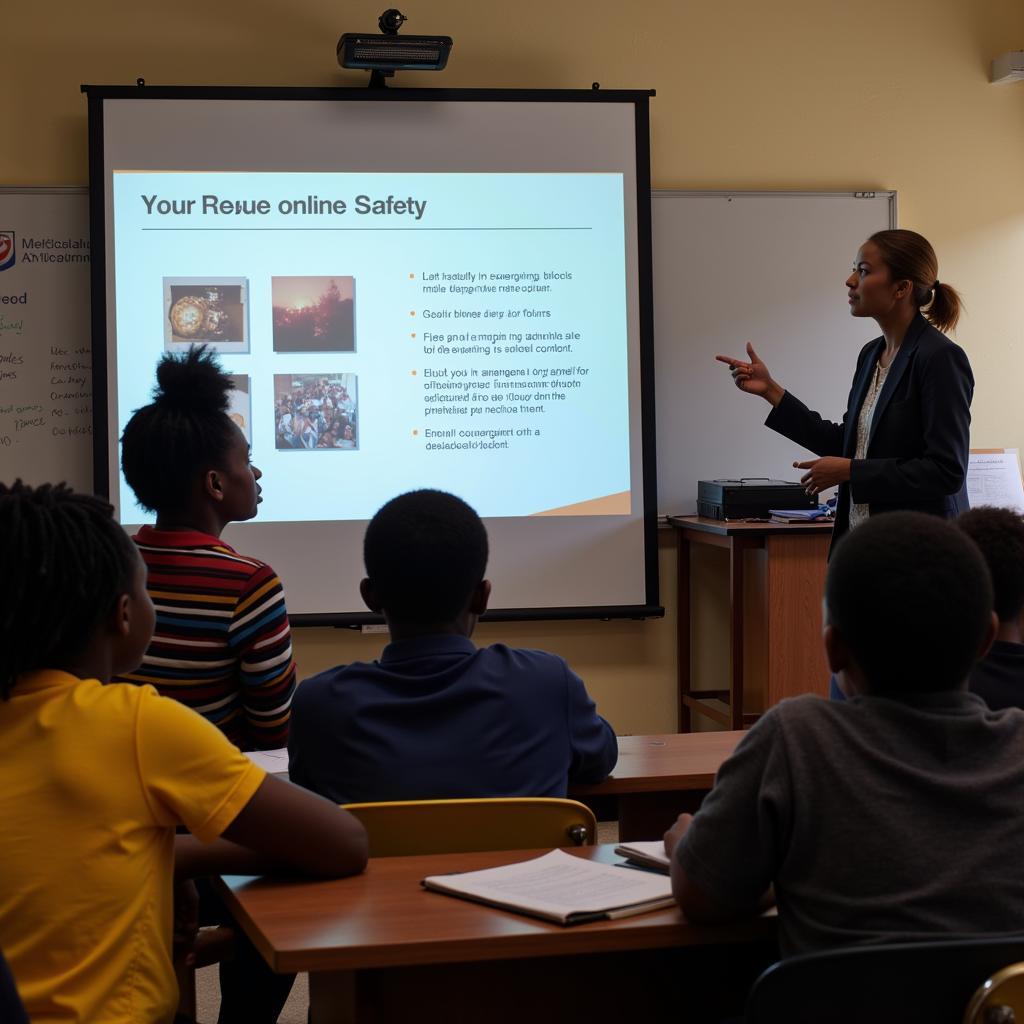African Elephant Protection: A Critical Mission
African Elephant Protection is a pressing issue. The survival of these majestic creatures hangs in the balance, threatened by habitat loss, poaching, and human-wildlife conflict. Understanding these challenges and the strategies employed to combat them is crucial to ensuring the future of African elephants.
The plight of African elephants highlights the interconnectedness of conservation efforts and the well-being of entire ecosystems. Their role as keystone species underscores the importance of protecting them, not just for their intrinsic value, but also for the health and stability of the African savannahs and forests they inhabit. Effective conservation strategies involve a multi-pronged approach, combining on-the-ground anti-poaching efforts with community engagement and international collaboration.
The Threats to African Elephant Survival
Habitat loss is a major driver of the decline in African elephant populations. As human populations grow and expand into elephant territories, natural habitats are converted for agriculture, settlements, and infrastructure development. This fragmentation restricts elephants’ movement, access to resources, and gene flow between populations. Poaching for ivory remains a significant threat. Despite international bans and regulations, the illegal ivory trade continues to fuel demand, leading to the senseless slaughter of elephants.
Human-wildlife conflict arises when elephants raid crops or damage property, often leading to retaliatory killings. This conflict underscores the need for strategies that promote coexistence between humans and elephants.
After this comprehensive overview of threats, let’s delve into the critical need for African elephant conservation. These challenges are daunting, but they are not insurmountable. With dedicated efforts and global cooperation, we can secure a future for these iconic animals. Are there sustainable solutions to protect African elephants while respecting the needs of local communities? Absolutely, and we will explore them in the following sections.
Strategies for African Elephant Protection
Protecting African elephants requires a multifaceted approach. Anti-poaching patrols, often involving rangers equipped with advanced technology, play a crucial role in deterring poachers and monitoring elephant populations. Community-based conservation programs empower local people to become active participants in elephant protection. This can involve establishing wildlife conservancies, promoting sustainable livelihoods, and educating communities about the importance of elephants.
International collaborations between governments, NGOs, and conservation organizations are essential for sharing best practices, coordinating efforts, and enforcing regulations against the illegal ivory trade. These partnerships help strengthen capacity building and resource allocation for effective conservation initiatives. Is international cooperation making a difference? Yes, through collaborative efforts, we’re seeing increased enforcement of anti-poaching laws and greater support for community-based conservation programs. This collaboration is pivotal in turning the tide against elephant poaching.
The Importance of Community Engagement
Engaging local communities is paramount to the success of African elephant protection efforts. When communities benefit directly from conservation, they become invested in its long-term success. Ecotourism initiatives, for example, can generate revenue for local communities while raising awareness about the importance of wildlife conservation. This creates a sense of ownership and fosters a positive relationship between humans and elephants.
What are some examples of successful community-based conservation programs? Several projects across Africa empower communities through sustainable agriculture practices, providing alternative income sources that reduce reliance on activities that harm elephant habitats. Some programs involve community members in monitoring elephant populations and reporting poaching activity, turning them into key stakeholders in conservation.
African elephant figurines depict the cultural significance of these animals. Similarly, exploring the African elephant skull can provide insights into their anatomy and evolution. Understanding the significance of African elephant tusks within both ecological and cultural contexts is crucial for comprehensive conservation efforts. Learning more about the relationship between an African elephant baby and mom can further underscore the social complexity and intelligence of these creatures.
Conclusion
African elephant protection is not just about saving a species; it’s about preserving a crucial part of Africa’s natural heritage. By addressing the root causes of threats, implementing effective conservation strategies, and fostering community engagement, we can safeguard these magnificent creatures for generations to come. Continuing our commitment to African elephant protection is vital for maintaining the ecological balance of the African continent and preserving its biodiversity.
FAQ
- What are the main threats to African elephants? Habitat loss, poaching, and human-wildlife conflict.
- How can I help protect African elephants? Support reputable conservation organizations, spread awareness, and advocate for stronger anti-poaching measures.
- What is the current population of African elephants? Estimates vary, but the population is declining due to ongoing threats.
- Why are elephants important to the ecosystem? They are keystone species, shaping their environment and influencing other species.
- What is being done to combat poaching? Anti-poaching patrols, community engagement, and international collaboration are key strategies.
- How can communities benefit from elephant conservation? Ecotourism and sustainable livelihood projects provide economic opportunities.
- What is the role of international cooperation in elephant protection? It facilitates sharing best practices, coordinating efforts, and enforcing regulations.
Common Scenarios & Questions
- Scenario: Elephants raiding crops. Question: What measures can be taken to prevent human-wildlife conflict in such cases?
- Scenario: Discovering injured elephants. Question: Who should be contacted for assistance and rehabilitation?
- Scenario: Witnessing poaching activity. Question: What is the protocol for reporting such incidents to authorities?
Further Reading & Related Topics
- Learn more about the intricate social structure of elephants by researching African elephant baby and mom.
- Understand the anatomical and evolutionary aspects of elephants by studying the African elephant skull.
- Discover the ecological and cultural significance of African elephant tusks.
- Explore the world of African animal figurines to appreciate the artistic representation of these majestic creatures.
Need Help? Contact Us!
Phone: +255768904061
Email: kaka.mag@gmail.com
Address: Mbarali DC Mawindi, Kangaga, Tanzania
Our customer support team is available 24/7.


